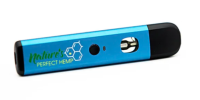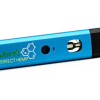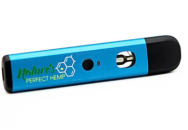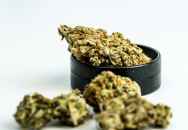Hemp, the versatile plant once demonized for its association with marijuana, is experiencing a renaissance in the USA. From clothing and cosmetics to building materials and biofuels, hemp products are popping up everywhere, touted as the eco-friendly alternative to everything from plastic to cotton. In this article, let’s delve into the environmental impacts of hemp products.
Green Credentials: Where Hemp Shines
There’s no denying hemp’s potential to be a sustainable superhero. Here’s why:
Hemp is a fast-growing plant. It thrives on minimal water and nutrients, requiring less irrigation and fertilizer than many traditional crops. This makes it a boon for dry regions and reduces water pollution.It captures carbon. Hemp is a champion at absorbing carbon dioxide from the atmosphere, storing it in its fibers and helping to combat climate change. Discover a new level of relaxation with Nature’s Perfect Hemp’s Delta-10 THC gummies along with other hemp products, crafted for an unparalleled experience. Available now in the USA!
It is ideal for natural weed control. Hemp’s allelopathic properties suppress the growth of weeds, reducing the need for harmful herbicides. It is durable and versatile. Hemp fibers are incredibly strong and long-lasting, extending the lifespan of products and minimizing waste. Hemp has numerous applications across construction materials, textiles to consuming it in the form of delta and CBD products.
It helps in soil regeneration. Hemp’s deep taproots help to aerate and enrich the soil, improving fertility and preventing erosion.
Shades of Green: The Challenges Remain
However, hemp’s eco-warrior status isn’t without its challenges:
Processing: Transforming raw hemp into usable fibers can be energy-intensive, requiring specialized machinery and chemicals. Finding more sustainable processing methods is crucial.
Pesticides and Fertilizers: It is evident that crops are sprinkled with pesticides and fertilizers to safeguard against weeds and pesticides. Similarly, the hemp plant is also fed with chemicals that may impact the environment negatively.
Transportation: Hemp products often travel long distances to reach consumers, increasing their carbon footprint. Supporting local hemp production can minimize this impact.
Greenwashing: The “hemp = green” narrative can be misleading. Every hemp product is different, they all can’t be called as green. Be a discerning consumer and research the production practices of the brands you choose.
The Road Ahead: Cultivating a Sustainable Future with Hemp
So, is hemp the ultimate green game-changer? While its potential for sustainability is undeniable, challenges remain. To ensure a truly green future with hemp, we need investment in research and development. Finding ways to reduce the environmental impact of processing, transportation, and farming practices is key. In addition, transparency and responsible sourcing is required. Consumers should demand transparency from brands about their hemp products’ origins and production methods. Further, supporting local and sustainable hemp farms helps in choosing locally-grown, organically-farmed hemp products minimizes environmental impact and supports ethical farming practices.
Beyond the Hype: Building a Balanced Perspective
Hemp isn’t a magic bullet for our environmental woes. Every material, from cotton to plastic, has its own environmental footprint. The key is to make informed choices, considering the entire lifecycle of delta products, from farm to consumer. Hemp can be a powerful tool in our quest for sustainability, but it’s just one piece of the puzzle. We need a holistic approach that embraces a diverse range of sustainable materials and practices.
Conclusion
Ultimately, the environmental impact of hemp products in the USA is not a simple yes or no. It’s a complex story with both green heroes and hidden villains. By understanding the challenges and opportunities, we can make informed choices and support the responsible development of this versatile plant, ensuring its environmental benefits outweigh the drawbacks. Remember, the future of hemp isn’t just in its fibers, but in our hands. Let’s weave a future where sustainability isn’t just a buzzword, but a reality woven into the fabric of our choices, one hemp fiber at a time.



















